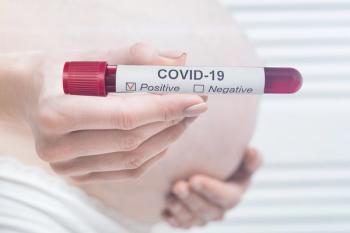
- Vol. 162 No. 04
- Volume 126
- Issue 04
Pediatric Patients Present Unique Challenges to Pharmacists
Board-certified pharmacists are better prepared to deal with pediatric patients than others. Here’s why.
Pediatric pharmacotherapy is a dynamic and challenging profession. It is a field that requires extensive experience and an in-depth understanding of pharmacokinetics and pharmacodynamics in order to expertly navigate the complexities of treating patients where clinical data on the use of drugs is limited and often requires off-label use.
I pursued a future in the pediatric field of pharmacy because of its unique challenges, as well as its positive impact on patient care for the most vulnerable population.
Neonates, infants, children, and adolescents differ from adults anatomically, physiologically, immunologically, psychologically, developmentally, and metabolically. As a vulnerable population, pediatric patients present a unique challenge and have a higher risk for adverse drug events than adults. For example, medication dosing errors are more common in pediatrics than adults because of weight-based dosing calculations.
Related article:
Most medications are formulated and packaged for adults, which requires manipulation of the dosage form in order to administer the precise dose to the child. Additionally, pediatric patients often can’t communicate effectively to providers any adverse effects caused by medications. This provides an opportunity for the pharmacist with expertise in pediatrics to ensure optimal pharmacotherapy with desired outcomes and minimal adverse effects to pediatric patients in collaboration with the caregiver and other healthcare professionals.
Several national organizations such as the
In 2015, the
- Completion of four years practice (post-licensure) in the pediatric setting with at least 50% of time spent in pediatric pharmacy activities
- Completion of a PGY1 residency plus two years of practice in the pediatric setting with a minimum of 50% of time spent in pediatric pharmacy activities
- Completion of a specialty PGY2 residency in pediatric pharmacy.
The exam covers four domains of specialized functions in pediatrics: patient management, practice management, information management and education, and public health and patient advocacy.
Related article:
Board certification elevates the status of pediatric pharmacists. These pharmacists collaborate with ambulatory-care pharmacists and other healthcare providers to improve pediatric public health, including by improving health literacy, providing individual patient care plans, and ensuring optimal medication outcomes.
A BCPPS can serve important patient care functions in many different settings such as the community, ambulatory care, or hospital. With the quality assurance from the Board of Pharmacy Specialties, these pharmacists can make a significant impact for young patients who have unique needs.
Articles in this issue
over 7 years ago
How Pharmacists Can Help Frail Patientsover 7 years ago
Explaining the Flawed DIR System to Student Pharmacistsover 7 years ago
How to Get Paid for Pharmacy Servicesover 7 years ago
Everything Pharmacists Need to Know About DIR Reformover 7 years ago
The Future of Pharmacy Is Not All Doom and Gloomover 7 years ago
Apalutimide for Prostate Cancer: What to KnowNewsletter
Pharmacy practice is always changing. Stay ahead of the curve with the Drug Topics newsletter and get the latest drug information, industry trends, and patient care tips.















































































































